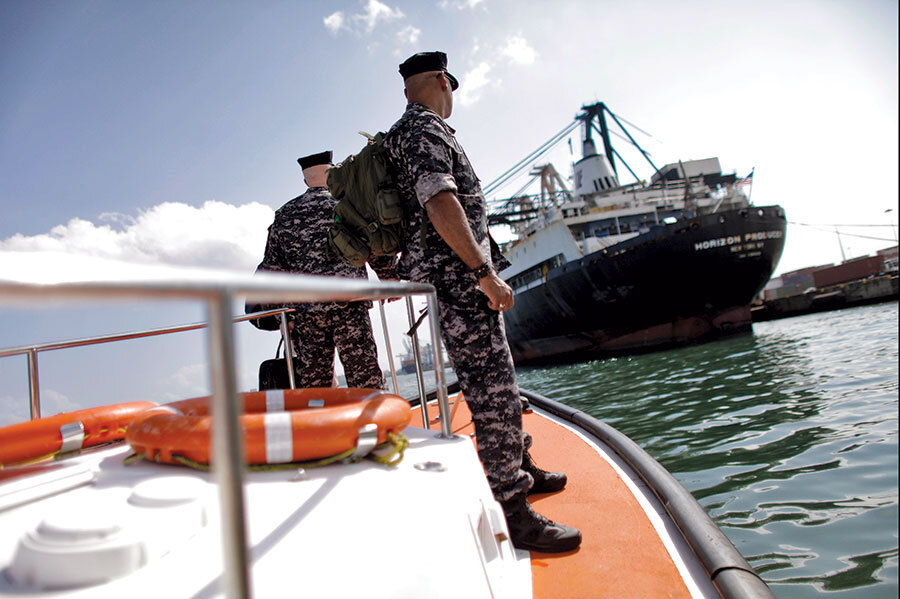Busting up Somali pirate attacks one ship at a time
Loading...
| Mombasa, Kenya
When they speed up to a lumbering ship, the main thing Somalian pirates do not want to see are armed guards. With fewer ships now being boarded in the Indian Ocean, security analysts are giving credit to the hiring of private guards who quickly display their defensive weapons on the deck of a ship as it gets scoped out by potential attackers in pirate skiffs.
David C., a former British Marine commando who fought in Iraq and Sierra Leone, talked with the Monitor out his new job as a private security team leader for shipping that runs in sensitive waters off the Somalia coast. The interview was conducted for a Monitor Focus story on progress in dealing with piracy, found here.
“Mr. C.,” who could not offer his last name, outlines the recent changes onboard ships, the new protocol for warning and chasing away pirates, and a concern about the future:
“Somali piracy has changed hugely since armed guards were allowed on ships. I’d say 9 times out of 10, when they see we’re there, they turn tail.
“[I]f there is a suspicious approach, first we increase speed to try to get away from them. But ... a skiff with some lightly armed Somalis is always going to be faster than a container ship, so most of the time they are going to catch up. What we’ll do then is turn on the fire hoses, not because they’ll stop the pirates boarding – they won’t – but to make sure they know we’ve seen them. Next, we need to show we have security onboard. I’ll send two of my guys out onto the deck in body armor and helmets, and they show their weapons, hold them above their heads.
“If the guys still continue to approach, I’ll pop a flare up to make sure they’ve seen the security. We will only fire a weapon if we are 100 percent certain that they are coming to cause us harm, and for that we need to see they have weapons and climbing equipment like ladders, grappling hooks, ropes. If they are still coming, we fire a warning shot over their heads or to the left or right. From my experience, 99 percent of the time that happens, they disappear. If not, and if we feel the vessel is now in grave danger, we fire further warning shots, what I call disabling shots, aiming for the speedboat or the outboard engine.
“By now, if they are within half a cable, or about 300 feet, and we’ve fired warning shots and tried to hit their boat, and they’re still coming, chances are they’ll be returning fire. Under maritime law, we can then protect ourselves and the ship with lethal shots.
“To give you a sense of how rare it is that we even get to the warning shots point, I have been doing this for four years and I’ve fired my weapon once. That was off Somalia in 2011. The pirates had hijacked a Thai fishing vessel, and we were out there in a small 150-foot tug that was very poorly defended. They started approaching. We launched our protocols, but straight away they started firing. We fired warning shots, and they ... turned around and disappeared. That was it.
The worry felt by security companies according to David C is that people think piracy has been beaten and that it is time to relax. But he argues "the guys are still there waiting."






